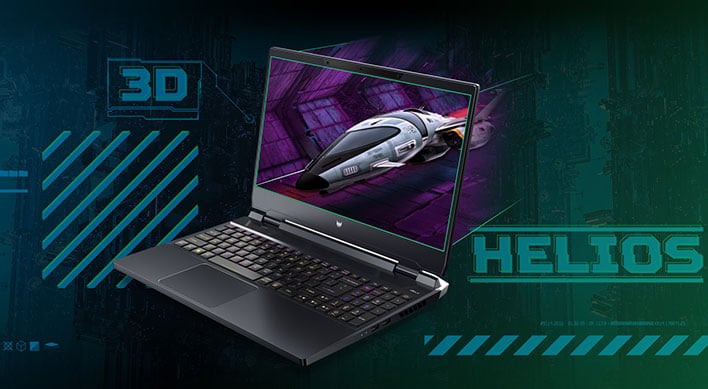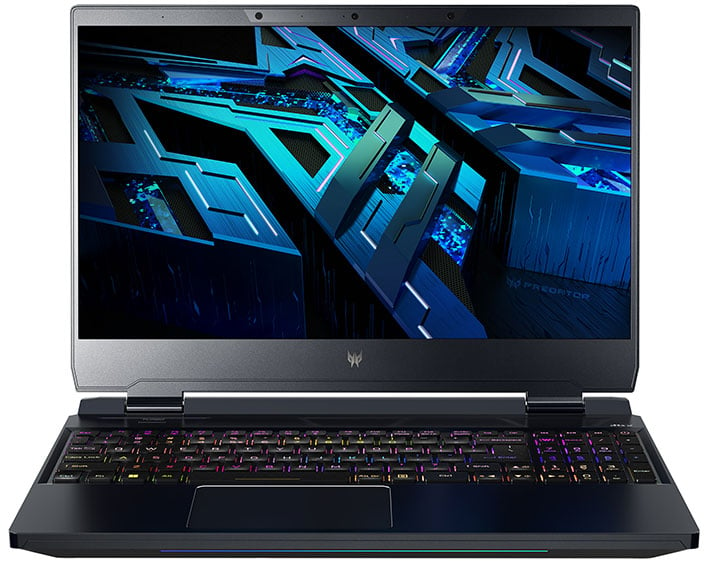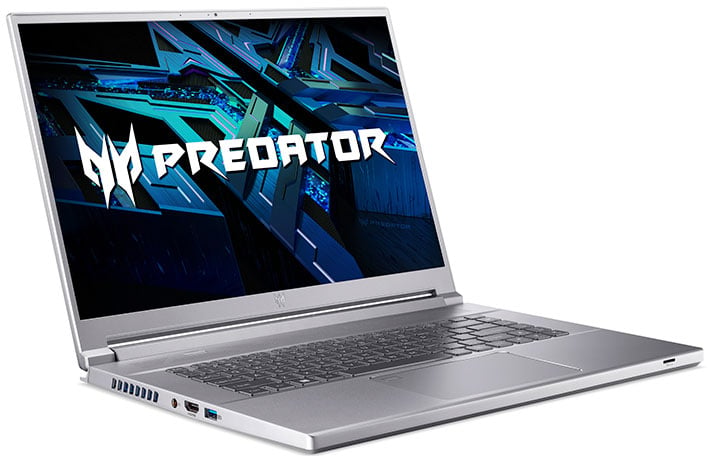Acer Predator Helios 300 SpatialLabs Gaming Laptop Packs A Glasses Free 3D Display

Acer is refreshing its Predator laptop line and one of the more surprising additions is the Predator Helios 300 SpatialLabs Edition. Through special hardware and software, this laptop attempts to bring glasses-free, stereoscopic 3D gaming into the forefront, and it boasts dozens of supported modern and classic titles at launch.
The challenge Acer faces is convincing consumers that glasses-free 3D needs to exist. We'll reserve judgement until when and if we see this laptop in action, but it seems like an uphill battle, given that the hype surrounding 3D has never been able to meaningfully permeate the market. Even Nintendo has moved on after a spirited run with the legendary 3DS.

Acer Predator Helios 300 SpatialLabs Edition
What's involved here is a combination of an eye-tracking solution, a stereoscopic 3D display panel (users can toggle between 3D and 2D), and real-time rendering technologies delivered through the SpatialLabs TrueGame application. There are over 50 games that support this, including titles like Godfall, Metro 2033 Redux, No Man's Sky, Serious Sam 4, and The Witcher 3: Wild Hunt.
Beyond the 3D aspect, this is a powerful gaming laptop with up to a Core i9-12900H processor, 32GB of DDR5-4800 RAM, GeForce RTX 3080 GPU, and 2TB of NVMe Gen 4 SSD storage configured in RAID 0.
Other features include Killer DoubleShot Pro and Wi-Fi 6E connectivity, an HDMI 2.1 port, a Thunderbolt 4 port, and two USB 3.2 Gen 2 ports. Acer says the Predator Helios 3000 SpatialLabs Edition will be available in early Q4 starting at $3,399.99.

Acer Predator Triton 300 SE (16-Inch)
Acer's also launching a couple of Triton 300 SE laptops, one in the 14-inch form factor and the other a 16-inch model. Both are relatively thin and light laptops weighing 3.75 pounds (14-inch model) and just over 5 pounds (16-inch model).
The 14-inch model is offered with an OLED display option (2880x1800), in addition to two IPS panels (2560x1600 and 1920x1200, both at 165Hz). The 16-inch version, meanwhile, offers two IPS options, one at 2560x1600 and 240Hz and the other at 1920x1200 at 165Hz.
Users can configure the 14-inch model with Core i5-12500H, Core i7-12700H, or Core i9-12900H processor, flanked by up to 32GB of LPDDR5-5200 RAM, 512GB or 1TB of SSD storage, and a GeForce RTX 3050 Ti or GeForce RTX 3060.
Those who opt for the bigger 16-inch model can select a Core i7-12700H or Core i5-12500H processor, up to 32GB of DDR5-4800 RAM, up to 2TB of storage, and GeForce RTX 3070 Ti, 3060, and 3050 Ti GPU options.
The 14-inch Predator Triton 300 SE will be available in July starting at $1,599.99 and the 16-inch in August starting at $1,749.99.

